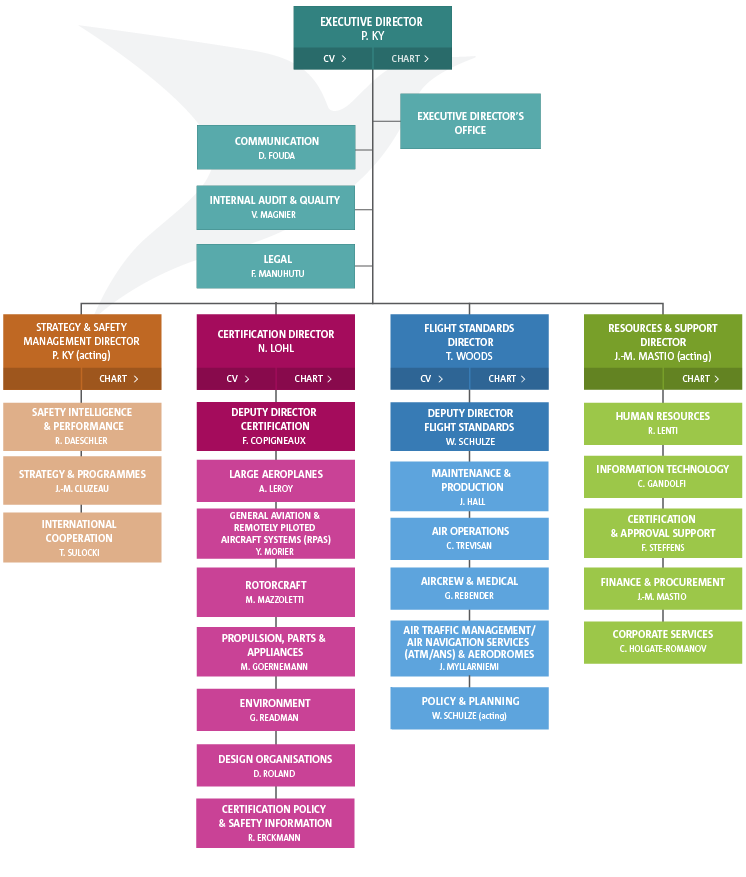A new organisational structure for the European Aviation Safety Agency (EASA) has been announced and can be found here. This reorganisation follows a decision of the Management Board in May 2014, and follows an extensive consultation, known as the Article 62 review.
In the introduction to the paper to the Management Board, a governance body chaired by Mike Smethers (the UK CAA’s Director Of European And International Strategy), EASA states:
After 10 years of existence, the Agency completed the foundation of its regulatory system covering its initial scope and the so-called 1st and 2nd extensions…. This being now in place… more attention needs to be paid to supporting Member States and Industry with implementation and to maintaining the regulatory framework, also considering the challenges faced by Member States themselves, in particular as concerns oversight capabilities.
Furthermore, the objective to continuously improve safety in economically challenging times implies revising the way the Agency defines its strategic priorities: a more consistent, data-centred, risk based approach should be implemented.
Finally, the Agency’s relationship with the Commission, Member States and Industry has always been pivotal to the establishment of a robust and internationally recognised EU aviation system. To further consolidate this relationship, clearer interfaces should be established, by ensuring single points of contact for dedicated domains.
The high level structure is below:

EASA Structure (Credit: EASA)
There are effectively 5 directorates:
- The Executive Directorate (ED), including Quality/Internal Audit, Legal, and Communications, reporting to EASA Executive Director Patrick Ky.
- A new Strategy and Safety Management Directorate (SM), to leverage a risk- and performance based, data-centred approach (as previously discussed by Aerossurance here). It will also be responsible for International Cooperation, Technical Training and Safety Promotion (such as the European Strategic Safety Initiative).
- The Certification Directorate (CT) will be organised in departments in charge of each product category . It will be responsible for all activities related to the Initial and Continuing Airworthiness of type design, Environmental Certification, Operational Suitability, and Design Organisation Approvals (DOA).
- A Flight Standards Directorate (FS) will be organised in departments in charge of technical domains, such as Production and Maintenance, Air Operations, Aircrew, ATM/ANS and Aerodromes.
- A Resources and Support Directorate (RS), responsible for finance, IT, HR, etc.
Rulemaking, Approvals and pan-European Standardisation activity is now absorbed into the CT & FS directorates.
Aerossurance has extensive experience in safety management, with aviation regulations, regulators and the activity of regulation. For advice, contact us at enquiries@aerossurance.com
Follow us on LinkedIn for our latest updates.

Recent Comments